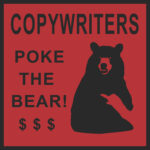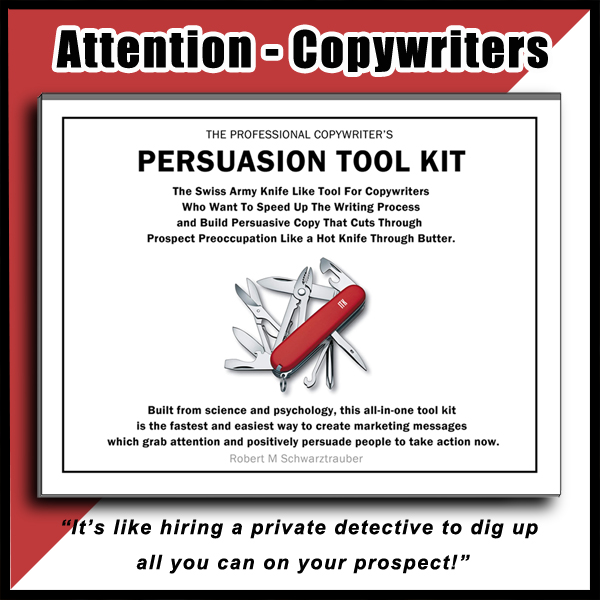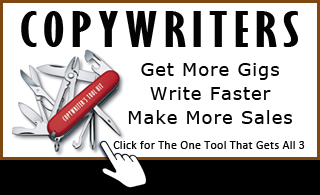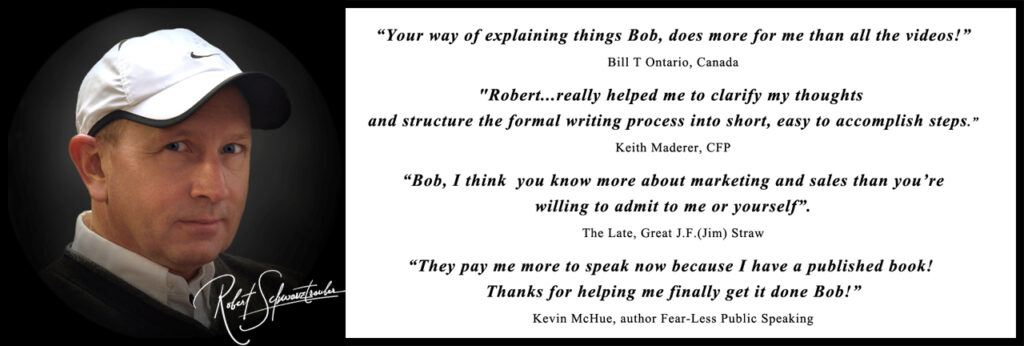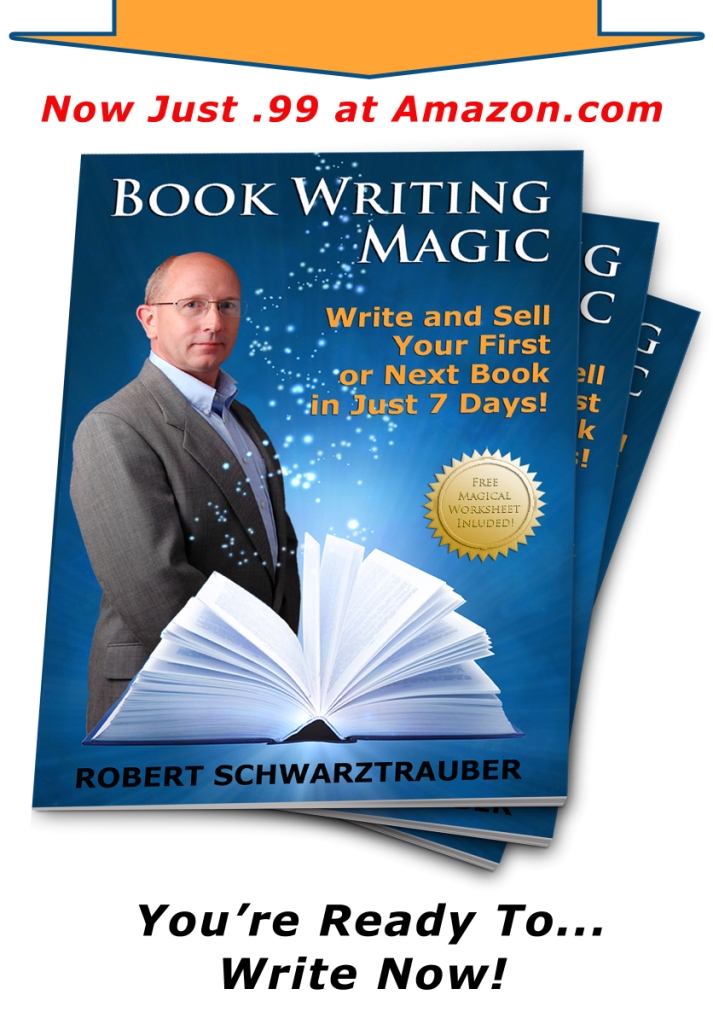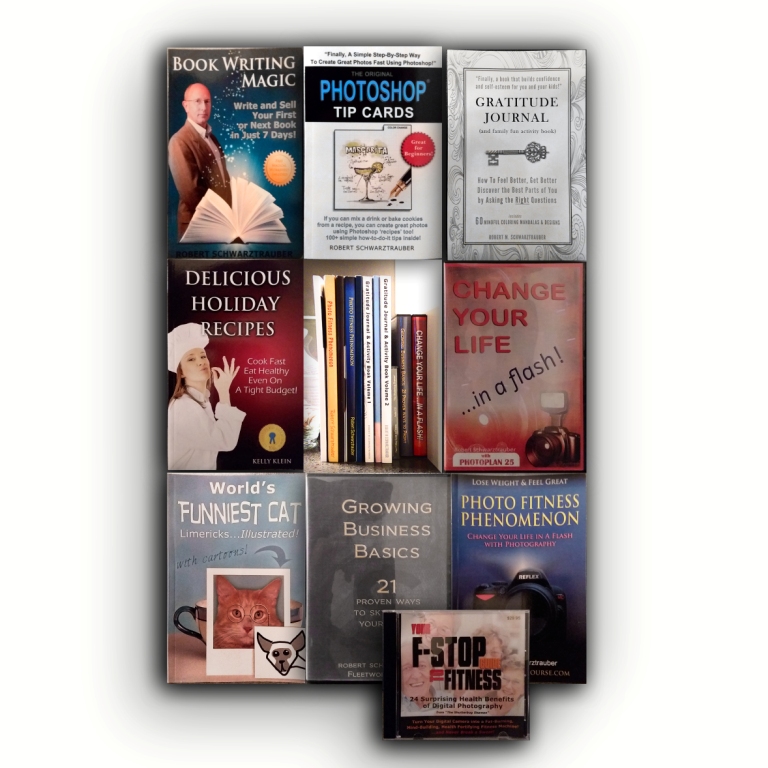Which easy book profits are you missing out on?
Did you know you could have your own book, self-published and available for sale, giveaway, or business promotion… this year!
You don’t need a mainstream publisher to write and publish a successful book. And it won’t take you years and years to get it done. In fact, you don’t have to do anything at all.
It can all be done for you – probably for less than you’re currently spending on that hit-or-miss shotgun advertising you’re currently doing. #9 is a real, eye-opening game changer for those that pay for advertising!
24 Easy Book Profits You’re Missing Out On
1. Influencing Millions Around the World
Publishing a book allows you to share your message with a wide audience and potentially influence millions of readers around the world. Writing a book establishes your expertise and gives you credibility to shape opinions. By self-publishing, you retain creative control to ensure your message reaches your intended audience. For example,
Rachel Hollis has built a multi-million dollar lifestyle empire by self-publishing motivational books like “Girl, Wash Your Face,” which has sold over 3 million copies worldwide.
2. Educating Millions
Books are powerful tools for educating readers. As an author, you can share your knowledge with people eager to learn. Self-publishing lets you create informative books tailored to your niche.
For instance…
James Clear authored the self-published book “Atomic Habits” to teach people how to build better habits. It became a #1 New York Times bestseller with over 5 million copies sold. Garnered free publicity.and made countless speaking opportunities available to help further spead the word and promote his other more profitable business ventures.
3. Raising Awareness for Your Cause
Writing a book enables you to raise awareness for causes and initiatives you care about. You can bring attention to social issues, injustices, charities and more.
Malala Yousafzai’s book “I Am Malala” spread awareness of education rights for women, selling over 2 million copies. Proceeds supported her non-profit Malala Fund.
4. Earning Respect as a Published Author
Being a published author garners respect and establishes you as an expert. People see someone who wrote a book as authoritative, dedicated and accomplished.
Self-publishing allows anyone to attain this recognition. By taking a bold stand, standing up for your ideas and principles, sharing real-life examples you set yourself apart from the timid masses and invite attention.
For example…
Mark Manson earned prestige by self-publishing “The Subtle Art of Not Giving a F*ck” which has sold over 20 million copies. This attracted to him multiple speaking and free publicity opportunities. And allowed him to sell memberships to his online newsletter and receive stable recurring income from that.
5. Standing Out Among Your Friends and Peers
Most people talk about writing a book but few follow through. Being published sets you apart from peers and friends. It shows commitment to sharing your ideas and story.
Brené Brown stood out by self-publishing her book “Daring Greatly” which kickstarted her multi-million dollar personal development empire.
6. Demonstrating Your Expertise
Writing and publishing a book is a powerful way to establish expertise in your field. You can position yourself as a thought leader by compiling industry knowledge into an authoritative resource.
Gary Vaynerchuk demonstrated social media marketing expertise through self-published books like “Crush It!” which drove his speaking career.
7. Expanding Your Expertise Through Reseach
The research and writing process expands your own expertise as you compile knowledge to share. You emerge with a deeper understanding of your topic when you endeavor to explain things to others simply.
For example…
Sleep expert Matt Walker enriched his knowledge by writing the bestseller “Why We Sleep” which sold over 1 million copies.
8. Generating Leads or Sales By Sharing Knowledge
Books allow you to share your products, services and knowledge with potential customers. You can use it to generate leads, upsell current customers and make sales.
Digital marketer Amy Porterfield drove enrollments in her online courses through self-published books like “Online Marketing Made Easy”.
9. Having Others Pay for Your “Advertising”
Readers pay for the cost of publishing your book, essentially paying to learn more about you and your business, products and services. It’s an extremely efficient and cost-saving way to get your message out.
Your cost for self-published paperback books can be just around $3 per copy and sell for $9.95 up to $39.95. They pay you to learn more about you and your business!
Business strategist Jay Abraham sold over 1 million copies of “Getting Everything You Can Out of All You’ve Got”, making readers fund his marketing.
10. Entertaining
Books let you share your unique voice, perspectives and stories with readers seeking entertainment. Self-publishing gives creative freedom to write an engaging book.
Andy Weir built a fanbase by self-publishing “The Martian” which became a bestseller and blockbuster film.
11. Leaving a Lasting Family Legacy or History
Publishing a book creates a lasting family treasure to be passed down through generations. You can compile genealogy, biographies, family stories and memories in one place.
Sharon Leslie Morgan chronicled her family’s history in “Gather at the Table” – a self-published book that preserved a legacy.
12. Offering Something Better Than a Boring Business Card
A book is a memorable way to share your expertise compared to a business card – which contains little information, no reasons why, no emotional appeal and often gets discarded promptly as soon as they are out of your sight.. Offering your book better helps form relationships and reciprocity because you actually gave something perceived valuable.
Consultant Alan Weiss gave his book “Million Dollar Consulting” to prospects which drove his multi-million consulting business.
13. Offering Gift or Premium That’s Not Junk
Books make excellent gifts, incentives and premiums. You can show appreciation by gifting your book to clients, employees or affiliates. Or bundle it with high-end offers.
Books make great “Trojan Horse” marketers. While providing valuable information to the readers with your text, you can also slip in mention of your other products, services or offerings the interested reader can avail themselves of.
Seth Godin gifted his book “The Dip” as a premium which expanded his reach.
14. Raising Funds for Your Charity or Non-Profit
Writing and selling a book enables you to generate funds for causes you support. Your book can raise both awareness and donations for your charity or non-profit. Activist Austin Channing Brown authored “I’m Still Here” with book proceeds benefiting racial justice organizations.
15. Creating Additional Sales Revenue
Your book can drive interested readers to buy related products, services or online courses you offer. It serves as a lead generation tool to sell your other offerings.
Business coach Joe Polish grew his high-ticket coaching services by giving away his book “Piranha Marketing”.
16. Creating Automated Streams of Recurring Income
A book allows you to generate automated passive income streams that keep earning you money over time. You can leverage your book to create online courses, membership sites, licensing deals and more.
Carol Tice earned over $500,000 from her self-published book “Make a Living Writing”.
17. Giving Purpose to Your Retirement Years
Writing and publishing a book is a fulfilling way to spend your retirement sharing your lifetime of knowledge. It allows you to leave a meaningful legacy during your later years.
Retiree Gary Bender found new purpose authoring the self-published book “Dogs Leave Pawprints on your Heart.”
18. Attracting Like-Minded Friends and Associates
Your book helps you connect with readers who share your interests, values and beliefs. Like-minded people are drawn to authors whose work resonates with them. Spiritual teacher Anita Moorjani built a community around her self-published book “Dying to Be Me.”
19. Longevity – Business Cards Get Tossed, Books Remain on The Shelf In Plain Sight
Unlike flimsy business cards that get discarded, books have longevity. They remain on book shelves, in plain sight as a lasting reminder of your personal brand and expertise. People resist throwing books away.
Self-published book “The Elliott Wave Principle” by investor Robert Prechter sold over 1 million copies and was reprinted for decades.
20. Directing Offline Clients Online
You can use your book to drive offline consulting and coaching clients to your website, online courses or membership site. Books build authority which help promote your online offerings.
Consultant David Bach gave his book “Smart Women Finish Rich” to offline financial planning clients.
21. Offering as Valuable Door Prize at Industry, Association or Club Events
Giving your book as a door prize or swag at industry events, associations and clubs generates goodwill. It raises your visibility and credibility among peers.
Offering her book “Code” helped programmer Al Sweigart establish expertise within software associations.
22. Creating Media and Speaking Opportunities
A successful book can lead to media and speaking opportunities like guest interviews, columns, conferences, corporate talks and webinars. These expand your audience.
After self-publishing “Shoe Dog”, Phil Knight was invited to speak about leadership and innovation at Fortune 500 companies.
23. Boosting Personal Pride and Confidence
Publishing a book can be a major accomplishment that makes you proud. Seeing your name and book in print is fulfilling on a personal level. The sense of achievement lasts a lifetime.
Historian Joseph J. Ellis felt deep pride publishing his book “Founding Brothers” which won the Pulitzer Prize.
24. Making More Money!
Writing and selling books can be extremely lucrative. Self-publishing offers higher royalties allowing you to earn more income directly from book sales.
Finance author Ramit Sethi earned over $12 million from his self-published book “I Will Teach You To Be Rich.”
The Obvious Conclusion
The many benefits of writing a book are clear.
So why not make this the year you finally write and publish your book?
No time?
Not sure where to start?
Hate to write?
Afraid of the cost?
No worries. There’s a book for every ad budget.
And everything can be done for you.
Robert Bly is known a well known and respected copywriter in the business community. To date, I believe he is credited with authoring over 80 book titles. What is not well known is that a great deal of these are ghost-written. And Bob actually IS a great writer!
It’s just not worth his time when he can get paid more from doing copywriting for big business clients. But he still sees the value of having books out there.
Writing a book doesn’t mean YOU actually have to “write the book”!
Do you think all those celebrity politicians, movie stars, and athletes had the time or talent to write a book?
Here are 10 famous books which have been ghost written, the book title, the credited author, and the ghost writer:
1. The Art of the Deal – Donald Trump – Tony Schwartz
2. Becoming – Michelle Obama – Sarah Hurwitz
3. Total Recall – Arnold Schwarzenegger – Peter Petre
4. If I Did It – O.J. Simpson – Pablo Fenjves
5. The Restless Wave – John McCain – Mark Salter
6. My Life So Far – Jane Fonda – Mary Williams
7. The Amateur – Edward Klein – Robert Mason Pollock
8. A Patriot’s History of the United States – Larry Schweikart and Michael Allen – Dave Dougherty and Michael Allen
9. It Takes a Village – Hillary Clinton – Barbara Feinman
10. Let’s Get Real or Let’s Not Play – Mahmoud Ahmadinejad – Nader Bagherzadeh
~ ~ ~
Are you now ready to start profiting for your own book too?
And stop missing out?
Request a free consultation and we’ll see if I can help you write and publish your own profitable book too.
send your email request today to: bob@writeforwealthclub.com
